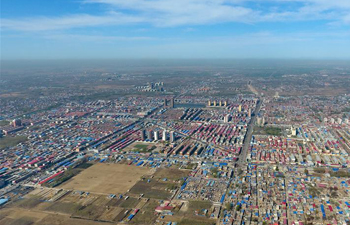WASHINGTON, April 10 (Xinhua) -- The geographic distribution of cholera incidence in Africa changes dramatically during El Nino years, with the burden shifting from portions of southern, central, and west Africa to east Africa, a new study suggested Monday.
El Nino, a cyclical phenomenon of warmer water in the equatorial Pacific Ocean, is associated with increased rainfall in East Africa and decreased rainfall in southern Africa, west Africa, and parts of the Sahel.
However, little evidence supports a link between cholera outbreaks and El Nino in Africa, which has the most cholera deaths in the world.
Cholera is an infectious and often fatal bacterial disease, typically contracted from infected water supplies and causing severe vomiting and diarrhea.
In the new study published in the U.S. journal Proceedings of the National Academy of Sciences, researchers collected data on cholera cases in Africa from 360 separate data sets, analyzing 17,000 annual observations from 3,710 different locations between 2000 and 2014.
The total number of cases of cholera across Africa as a whole were about the same in El Nino years as compared to non-El Nino years, the researchers found.
But the geographic distribution of illnesses was fundamentally different, with about 50,000 additional cases in East Africa and 30,000 fewer cases in southern Africa during El Nino years than during non-El Nino years.
At the same time, parts of central west Africa also saw significantly fewer cases of cholera.
Overall, 177 million people live in areas where cholera incidence increased during El Nino years by at least one per 100,000 people.
Within regions where the association between El Nino and increased cholera incidence was strongest, cholera incidence tripled during El Nino years.
The findings could allow countries to prepare for cholera outbreaks long before they start, said study leader Justin Lessler, an associate professor of epidemiology at the Johns Hopkins University.
"We usually know when El Nino is coming six to 12 months before it occurs," he said in a statement. "Knowing there is elevated cholera risk in a particular region can help reduce the number of deaths that result. If you have cholera treatment centers available, fast, supportive care can reduce the fatality rate from cholera from as high as 30 percent to next to nothing."
In addition, there is already an approved vaccine for cholera, but its effects are not lifelong and there are not enough doses for everyone in areas that could be impacted by El Nino.
Once there is more vaccine, Lessler said, it can be another tool for health officials to use as they try to prevent deadly cholera in their nations.

















